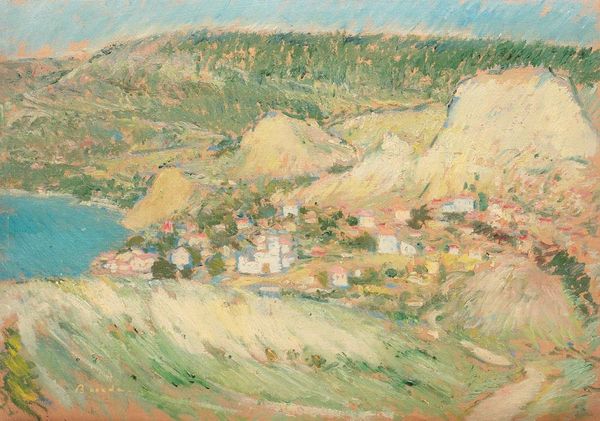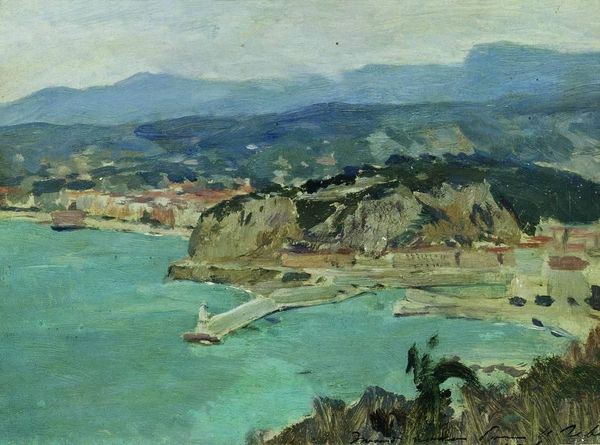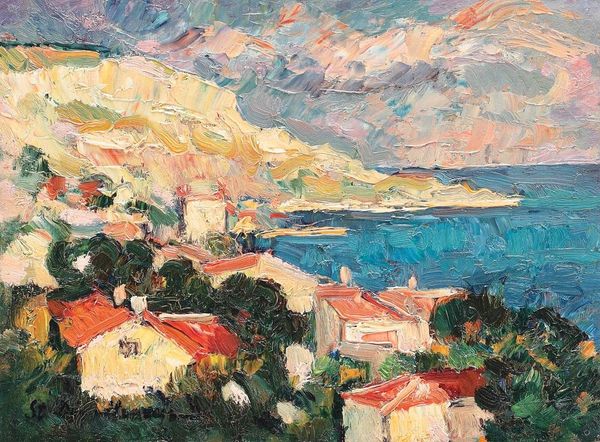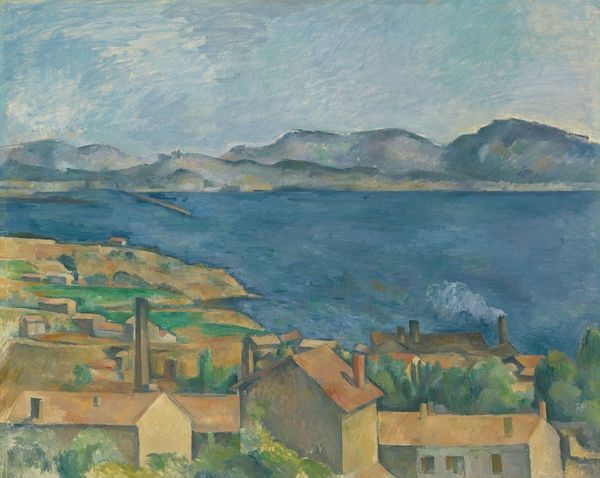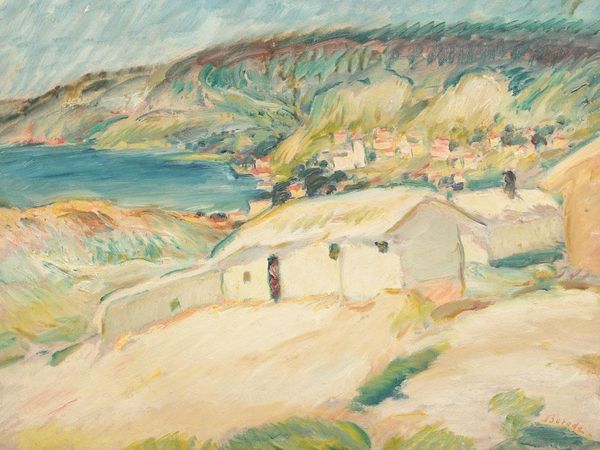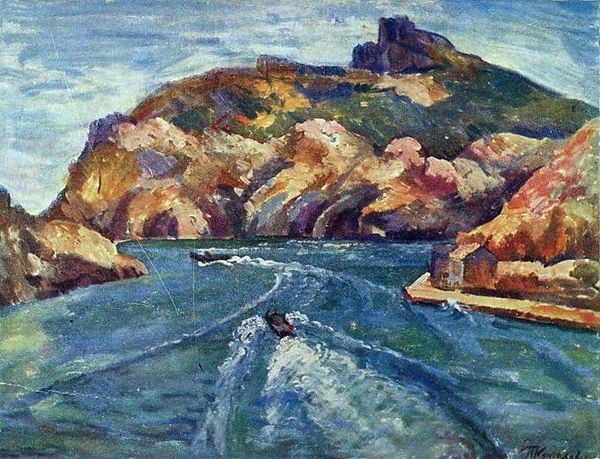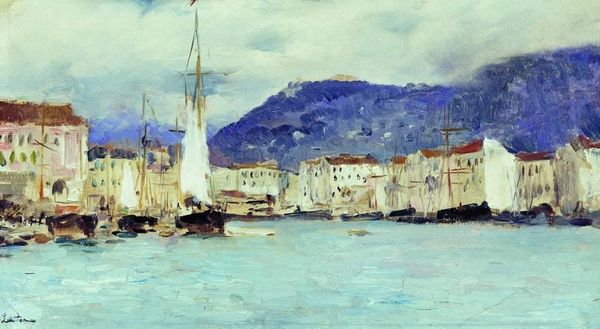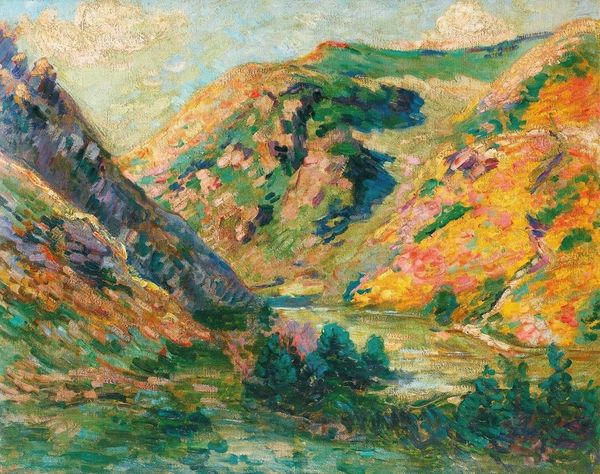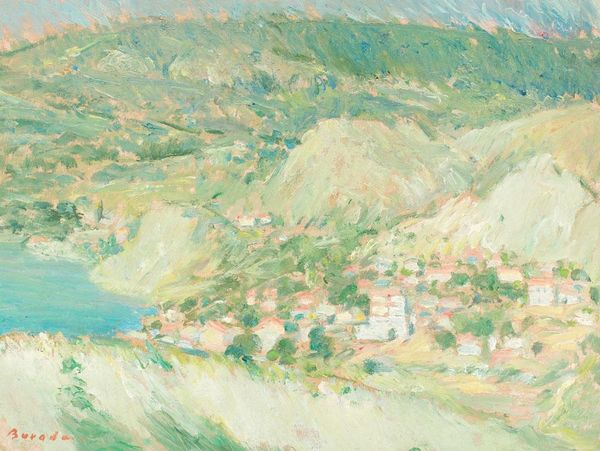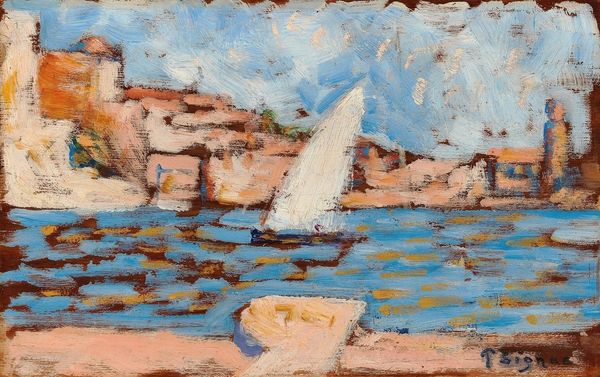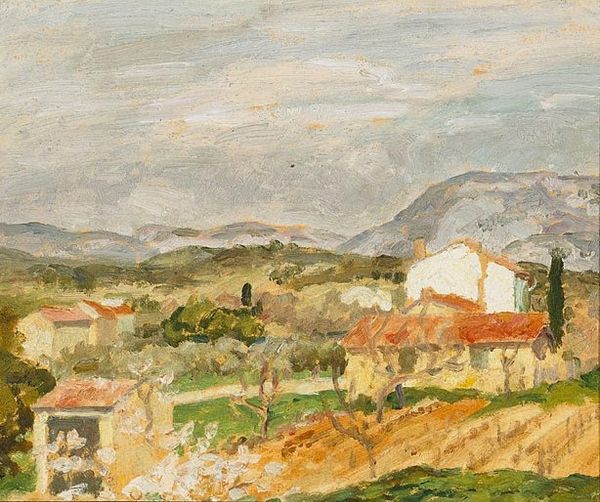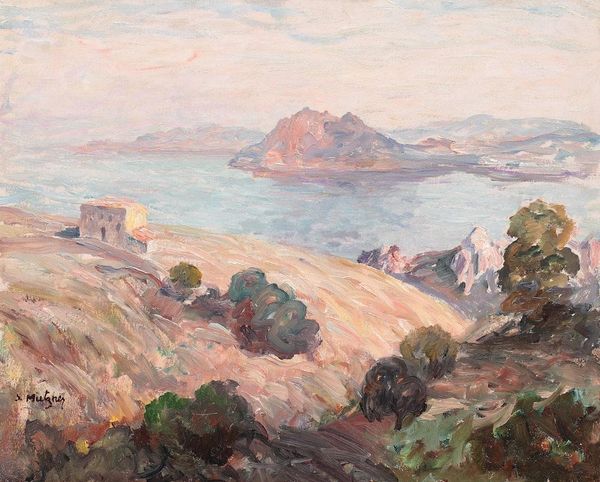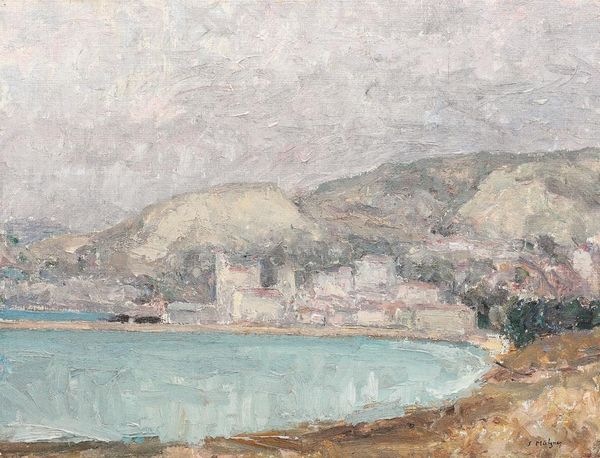
painting, plein-air, watercolor
#
water colours
#
painting
#
impressionism
#
plein-air
#
landscape
#
impressionist landscape
#
watercolor
#
cityscape
Copyright: Sever Burada,Fair Use
Curator: Let’s turn our attention to “Balchik Gulf,” a watercolor painting by Sever Burada. I find myself immediately drawn into the texture; there’s a dynamic energy to the brushstrokes. Editor: Indeed. The visible brushstrokes give it an immediacy, capturing a fleeting moment. The subject matter – the Balchik Gulf – is itself steeped in history as a popular destination for Romanian artists and intellectuals during the interwar period when it was Romanian territory. There is also something unsettling in it. The work, though colourful and pleasant, hides a complicated history of territory control and changing nationalities. Curator: Certainly, the energetic brushwork is intrinsic to its impressionistic style. Notice the layers of blues and greens that create depth in the water, and how that same application is employed for the distant hills, giving a sense of spatial compression. It is like he aims to make it timeless, even though it carries that past you describe. Editor: Yes, there’s almost an attempt at erasure. By focusing on a pretty picture, does it attempt to erase that complex social context? I wonder about the demographics of Balchik in that era—who had access to that supposed paradise? How were they benefiting, while others were potentially displaced or exploited? Who got to be there and enjoy it as leisure versus the hard lives of those who served them. Curator: I can see how your reading opens to layers of social complexity, yet I can not stop but think on how those colours blend—the juxtaposition between those strokes. The lack of clearly defined forms, to some extent, gives the composition movement as the sailboats cuts across the open body of water. Editor: Perhaps. To me, that small boat and the building ashore also could stand for social commentary in regards to freedom or lack thereof. Its scale within the overall landscape further emphasizes power dynamics inherent during times when borders and territories changed constantly due to the geopolitical reality and policies which privileged the colonizers over those colonized. Curator: Ultimately, it showcases how different theoretical lenses bring unique interpretations of Burada's artwork. I appreciate its complex textural nuances, while your insight unveils how visual art reflects the underlying history within “Balchik Gulf”. Editor: Agreed. This exploration hopefully allows visitors to connect with “Balchik Gulf” on different emotional and intellectual levels and become more historically informed through that process.
Comments
No comments
Be the first to comment and join the conversation on the ultimate creative platform.
